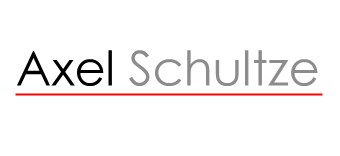Lot’s of discussions around the technology model (single tenant, multi tenant, hybrid model). Some say only a multi tenant architecture is a real SaaS play. I’d like to challenge all of us (at least the technologists) with some thoughts:
Let’s look at today’s multi tenant architecture. The easiest way to do that is to check out the Salesforce.com literature which exposes the architecture for developers. What we find is a data model with the traditional hierarchy of an account, organizational structure and users. We find objects such as leads, opportunities, cases, documents etc. and we find some basic processes to manage those objects based on certain criteria or events. Every new tenant is bound to this architecture (which is well thought out) and is therefore able to use the application very quickly. All it takes is an underlying or overarching model that allows every tenant to use the model in some variations, add custom data fields etc. without interfering with other tenants. Salesforce.com demonstrated that it works, is pretty secure and flexible enough to have many companies using the application and still have some freedom for customization. So far so good. As long as we continue to think in our boxed world (our companies’ 4 walls) that is all fine.
Now – outside this box: It’s no longer just the company but there are partners who deal with us, and also with other companies. There are suppliers who provide us with additional material, resources and other services. And oh – there is this thing called “customer”, in case you forgot – it is the entity that pays the bills (mostly). Customers deal with us, with our partners and of course also with other companies and competitors. And here is the challanging question: What role is the customer playing in this new multi tenant architecture based SaaS model? Today: None!
How will we integrate partners, customers and other constituencies into a meaningful information and process flow? It’s not a question of whether we will do it or not – but how and when. Multi tenancy still works inside the box – for one corporate entity. But as soon as multiple legally independent entities need to collaborate, we’ll hit the wall. Yes, we can use SOA, WDDX, XML and what have you, but we are back to square one – like in the previous stage of software we relay on interfaces, APIs and the big hope that it’ll work together. Of course it is much easier but still time consuming and risky. Architecturally Multi Tenant Architecture is a very economic model to drive efficiency and I don’t want to belittle it in any way – it is a major step forward yet we need a new model.
Rather than thinking from the inside out we have to begin thinking outside in. We will need to make it MUCH easier for customers to interact with companies and for partners to do business with their vendors and their customers. Suppliers need to be able to collaborate with all sort of customers without the need to interface all those applications with each other. CommerceOne failed by trying and others didn’t even get there. People asked me whether Tanooma will build interfaces to connect all the SaaS players. The answer is “no”. 400 vendors today – 2,000 in may be 2 years from now. And even if we would, it would still be an “internal vendor play” – it would still only represent the old way of thinking in integrations. So to build interfaces with all those companies would be the wrong approach. We all need to elevate ourselves and our respective technology to a higher model where we think and more importantly ACT outside our 4 walls. The challenge is to move from or skip a multi tenant architecture and develop a truly networked interaction model where tenants are no more an encapsulated entity but an organism like cell that is able to seamlessly interact with others: customers, partners, suppliers and must importantly: we need to begin thinking of the “user” not the “account”.
Creating this new model – or architecture may go beyond what a single company can do. It may be an “open mind project” (like opensource). It may even require cross technological expertise that goes beyond the knowledge of our own industry. I decided to start this in the next few days.
